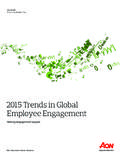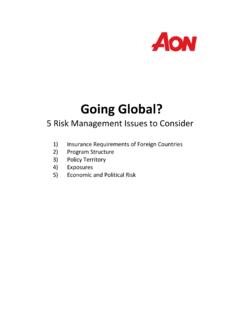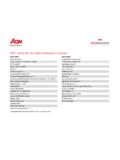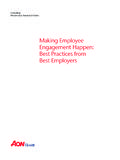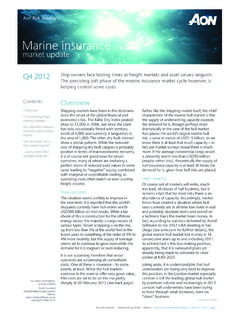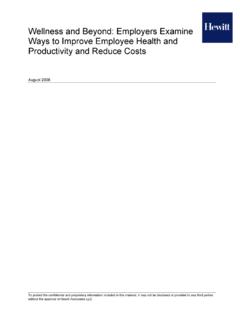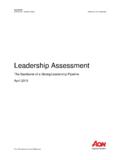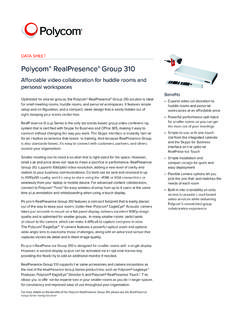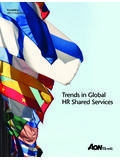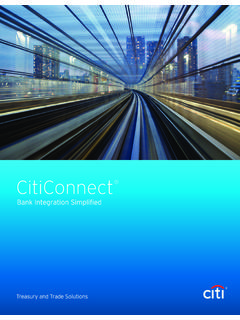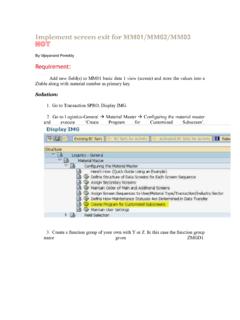Transcription of Survey Highlights Managing HR on a Global Scale
1 Survey Highlights Managing HR on a Global Scale Findings From Hewitt's 2009 Global HR Study What does it mean to be a Global HR organization? As companies large and small continue to expand their Global footprint, the question strikes at the heart of every HR function. Hewitt's 2009 Global HR Study explores this fundamental question, as well as many others, to explain how HR organizations are evolving to meet the needs of a Global business and workforce. Eighty-five Global companies participated in the study from North America, Europe, and Asia-Pacific. Region Revenue Size 18%. 25% Less than North America 29%. Europe $1 billion Asia-Pacific $1 to $5 billion 46% $5 to $10 billion 27%. $10 to $25 billion 12%. 29%. More than 14%. $25 billion Research Highlights Being Global is about Global mindset and capability, not just structure or systems.
2 Where work is done at Global , regional, and local levels, companies are taking a portfolio approach based on specific criteria. Increasingly, a company's most critical Global capabilities ( , leadership) are managed through a Global , centralized approach to drive consistency, focus, and effectiveness. Regional hubs are emerging as a way to drive both strategy and efficiency in diverse, complex organizations. Talent management is still managed primarily at a local business unit (BU) level but for many companies, Global integration of these programs is a top priority. 1. In many instances, HR is leading rather than lagging the business in terms of developing and building Global HR strategy and structures. Many companies are focused on upgrading the capabilities of their HR staff to effectively support Global business.
3 In some organizations, we're seeing a shifting in the roles of HR centers of expertise (COEs) and business partners to better respond to business needs. HR is playing a growing role in the shaping of corporate ethics and social responsibility, serving as a steward of organizational values. Progress has been made to drive standardization and efficiencies in HR; however, significant opportunities remain in both program management and service delivery. A rigorous approach to HR governance, including establishing clear metrics, plays a vital role in Managing risk and maximizing HR effectiveness on a Global basis. What It Means to Be a Global HR Organization Business globalization and cross-border trade and investment have accelerated over the last decades. Since 1950, world trade has increased twentyfold.
4 There is no doubt that the current economic slowdown is affecting the pace of how companies are globalizing, but most experts believe globalization will continue. Hewitt's Global HR Study further illustrates this globalization trend. Three-quarters of participants characterized their company as International or Transitioning to Global , while a smaller number (15%). identified themselves as Global .. Multinational International Transitioning to Global Global (6%) (35%) (40%) (15%). An organization with An organization with An organization that is An organization that cross-border operations headquarters that taking concrete steps to develops strategies and that are primarily retains some control develop worldwide policies on a worldwide decentralized and over decisions, but strategies and policies basis and shares autonomous still remains largely resources across borders decentralized Implications for HR.
5 The implications for HR are significant in terms of Globally aligned HR Structure and strategies and capabilities to help both Managing a Global workforce and operating priorities drive business goals as a Global function. Results confirm that few HR. organizations are operating on a truly Global Strategy and Organization Program Design basis. Rather, many are taking a portfolio Design approach, where work is done at Global , regional, and local levels, depending on the needs of the Governance Service organization. When Managing Global HR, leading and Delivery and Metrics Technology companies address four disciplines, with a clear Culture of Operational accountability effectiveness and rationale for each on the degree and scope of and efficiency in Global influence.
6 These disciplines will be measurement transactions explored in greater detail in this report. 2. Strategy and Organization Program Design Design Governance Service and Delivery and Metrics Technology Strategy and Program Design: Finding the Right Balance Most organizations struggle with developing a Global HR strategy that meets the diverse needs across businesses and geographies. While 93% of organizations reported having a clearly defined strategy, in many cases this strategy applies to their primary operating region. Only 49% of respondents indicated that their strategy spans all of their operating regions. Program Design: A Two-Pronged Approach Results indicate that many organizations conduct program strategy and design based on a two-pronged approach. There is a core set of programs managed primarily at the Global level.
7 Typically, these programs focus on a critical segment of the population or involve strategic principles that require enterprise-level oversight. Other programs are managed predominantly at the local country level and may have specific legal or regulatory mandates that require more local involvement. Still, the relatively high predominance of activities occurring at the local level suggests that many organizations have not taken significant action to manage programs on a more standardized basis. Shifting From Local to Regional/ Global HR Strategy and Program Management While each company's HR strategy is unique, top Global organizations use a decision framework to determine the appropriate balance of Global , regional, and local HR roles. The table below outlines a suggested criteria road map for making these decisions.
8 The trend among organizations is to shift program strategy and design from the local country level to regional or Global levels to drive a more strategic approach and to take advantage of economies of Scale . Primary Considerations or Drivers Examples Outcomes Local (by country) Legal and regulatory Payroll, labor relations Primary opportunities for cost Differentiation at local country requirements Administration of benefits efficiency by cross-business is critical or mandatory based Dominant BU- or country- (retirement, health and welfare) consolidation at country level on regulatory requirements focused business structure Regional standardization needed Local outsourcing relationships to achieve further efficiencies Regional (across multiple Regional commonalities (culture, Strategy/design (recruiting Primary opportunities for cost countries) language, geography, law, etc.))
9 And sourcing, learning and efficiency and strategic coordination Need for greater coordination Strong regional business development, compensation) for geographic regions ( , Eastern and efficiency with flexibility orientation Regional service delivery Europe, Southeast Asia). to accommodate regional (expatriate, compensation, differences HR reporting, recruiting). Global (across enterprise) Driving Global principles, culture, Executive compensation Primary opportunities for strategic Enterprise strategy where and mindset Leadership coordination and long-term growth . consistency and/or consolidation Managing enterprise-wide assets especially in areas of talent HR reporting management, data analytics, and creates significant value Global technology solution Ethics and corporate social Corporate Social Responsibility and responsibility compliance Risk management Cost is not typically the primary driver 3.
10 Strategy and Organization Program Design Design Governance Service and Delivery and Metrics Technology Organization Design: HR Leading the Way Our research indicates that in many instances, HR is leading rather than lagging the business in terms of organization design. This is driven in large part by the growing recognition that the company's most critical human capital priorities require a consistently Global approach in strategy and design. Prevalence of HR Organization Structures 43%. 30%. This compares with 15%. of companies that define 13%. 11% themselves as Global . 3%. overall. Global HR Two-tiered Traditional Traditional Other model (hybrid) model functional functional model model (replicated by (replicated by region) division). Thirty percent of companies described their HR organization structures as Global (defined as Global COEs who manage program strategy and design, and a Global HR operations group that manages centralized/regional HR service centers and/or outsourced providers).
